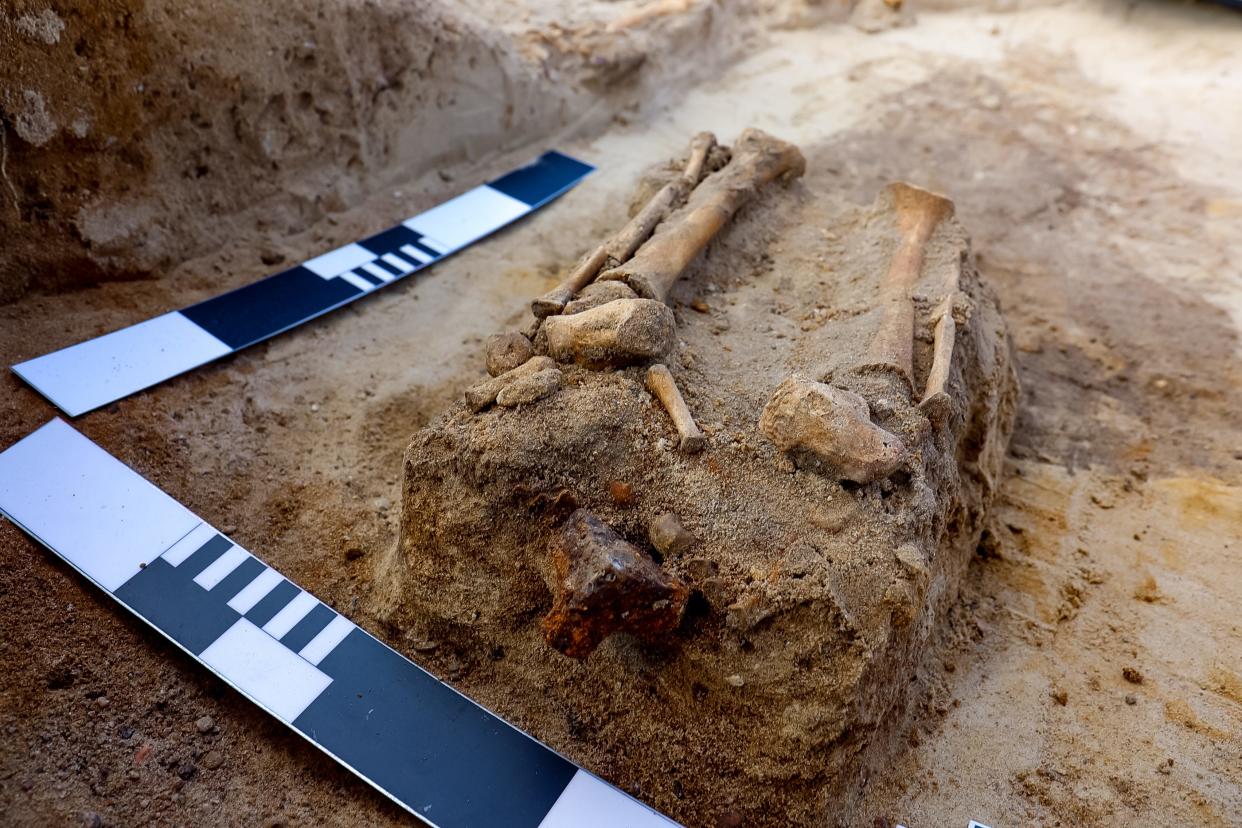Archaeologists discovered a 17th-century 'vampire child' with a padlocked ankle in a Polish 'necropolis' graveyard

Researchers have unearthed the skeletal remains of a "vampire child" in a Polish graveyard.
The child was buried face down with a triangular padlock on its foot.
Anti-vampiric burial techniques such as this were used across Europe starting in the 14th century.
Researchers have unearthed the remains of what they believe to be a 17th-century "vampire child" who was buried face down and padlocked to the earth in a likely effort to assuage villagers' fears that the child would return from the dead, the lead archaeologist on the dig told Insider.
The skeletal remains of the child, whom anthropologists believe was 5 to 7 years old, were discovered in an unmarked mass cemetery in the Polish village of Pień, near Ostromecko.
The "necropolis," which literally translates from Greek to "city of the dead," is also where archaeologists discovered a "vampire" woman last year who was buried with a padlock attached to her big toe and a sickle lying across her neck meant to sever her head should she try to rise from the dead.
Dariusz Poliński, the archaeology professor from Nicolaus Copernicus University who led both digs, told Insider the two graves were found a mere 2 meters from one another in the cemetery, which his team believes is a makeshift graveyard for "the excluded," or those who were not welcome in Christian cemeteries for various reasons.
Poliński said he and his researchers had uncovered about 100 graves in the cemetery, many of which displayed irregular burial techniques including "anti-vampiric" tactics used to stop people from "coming back from the grave," including triangular padlocks attached to people's feet to keep them tethered to the ground and evidence of gravesites being disturbed or dug into after the initial burial.

There are several reasons a person might have been buried in such a cemetery, Poliński said. The individual might have exhibited strange behavior while alive that caused others to fear them, or they might have suffered from a disease or unusual physical condition that affected their appearance.
"It might have also been a person died violently and suddenly in strange circumstances," Poliński said via a translator. "Sudden death was often considered something people should be afraid of."
Seventeenth-century villagers were also prone to fears about children being buried who had yet to be baptized or christened, as well as people who drowned.
Poliński said archeologists also found a collection of loose bones near the child's gravesite, as well as a pregnant body with a fetus determined to be about 6 months old.

Matteo Borrini, the principal lecturer of forensic anthropology at Liverpool John Moores University, told Insider's Katherine Tangalakis-Lippert and Marianne Guenot last year that the practice of "vampire burials" was common across Christian areas in Europe starting as early as the 14th century.
People associated "vampiric" outbreaks with times of mass deaths that were unexplainable at the time but are now assumed to have been pandemics or large-scale poisonings. The common thought was these "vampires" would hunt and kill their family members first, then move on to neighbors and others in the village, which tracks with our modern understanding of the spread of contagious disease, Borrini told Insider.
Read the original article on Business Insider


